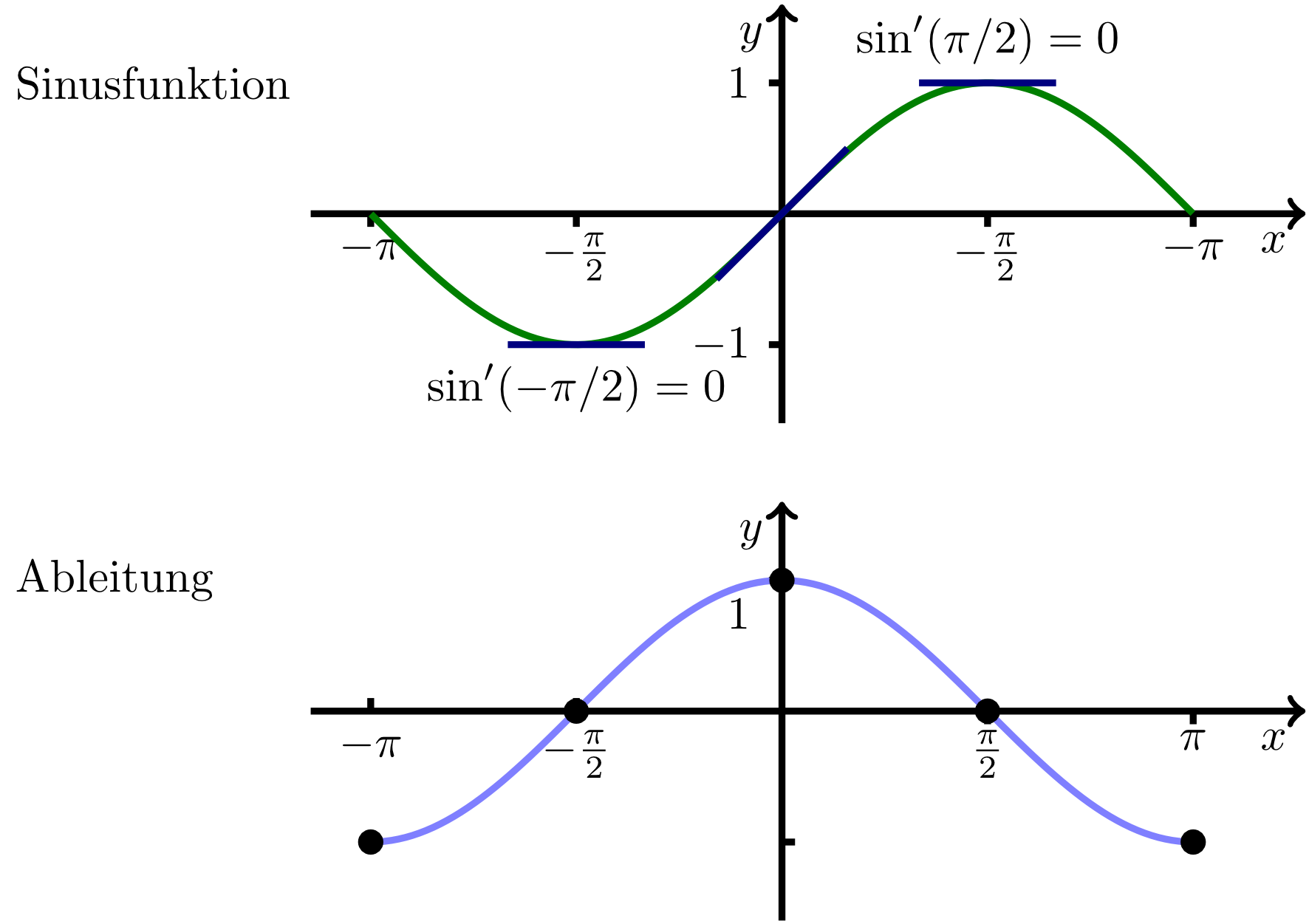Chapter 7 Differential Calculus
Section 7.2 Standard Derivatives7.2.3 Derivatives of Special Functions
Derivatives of Trigonometric Functions
The sine function , is periodic with period . Thus, it is sufficient to consider the function on an interval of length . A section of the graph for is shown in the figure below:
As we see from the figure above, the slope of the sine function at is . The tangent line to the graph of the sine function at has the slope . At , the tangent line has the same slope as the tangent line at , but the sign is opposite. Hence, the slope at is . Thus, the derivative of the sine function is a function that exhibits exactly these properties. A detailed investigation of the regions between these specially chosen points shows that the derivative of the sine function is the cosine function:
Derivatives of Trigonometric Functions 7.2.5
For the sine function , , we have
For the cosine function , , we have
For the tangent function , , we have
For the cosine function , , we have
For the tangent function , , we have
This last result comes from the calculation rules explained (explained below) and the definition of the tangent function as the quotient of the sine function and the cosine function.
Derivative of the Exponential Function
Info 7.2.6
The exponential function , has the special property that its derivative is also the exponential function, i.e. .
Derivative of the Logarithmic Function
The derivative of the logarithmic function is given here without proof. For with one obtains , .
 Onlinebrückenkurs Mathematik
Onlinebrückenkurs Mathematik
